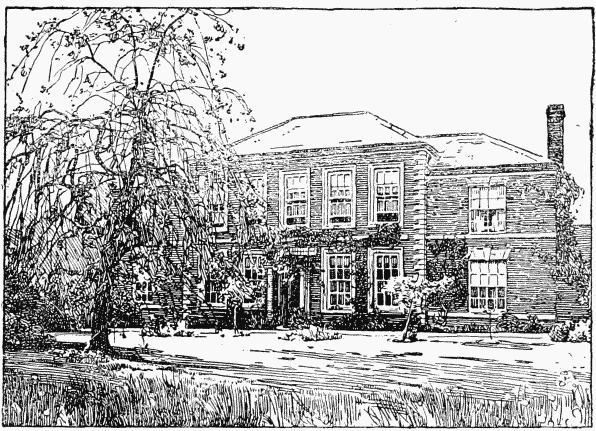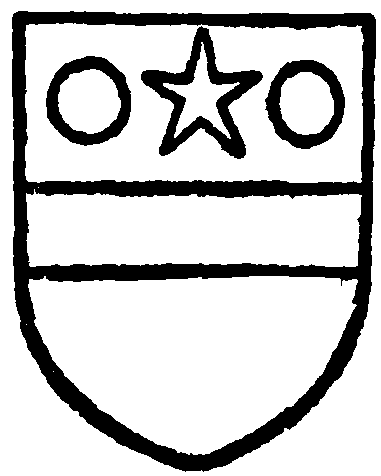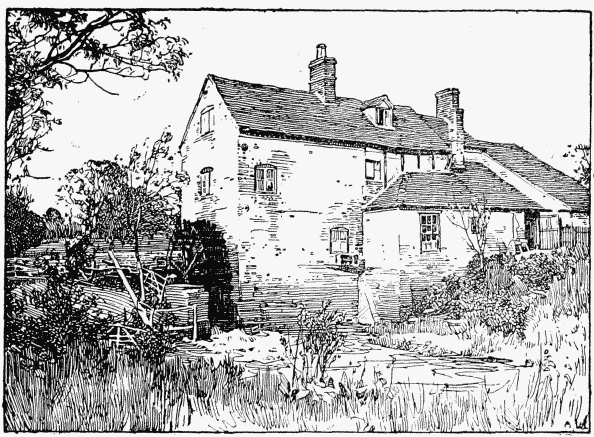A History of the County of Worcester: Volume 4. Originally published by Victoria County History, London, 1924.
This free content was digitised by double rekeying. All rights reserved.
'Parishes: Peopleton', in A History of the County of Worcester: Volume 4, ed. William Page, J W Willis-Bund( London, 1924), British History Online https://prod.british-history.ac.uk/vch/worcs/vol4/pp147-150 [accessed 24 November 2024].
'Parishes: Peopleton', in A History of the County of Worcester: Volume 4. Edited by William Page, J W Willis-Bund( London, 1924), British History Online, accessed November 24, 2024, https://prod.british-history.ac.uk/vch/worcs/vol4/pp147-150.
"Parishes: Peopleton". A History of the County of Worcester: Volume 4. Ed. William Page, J W Willis-Bund(London, 1924), , British History Online. Web. 24 November 2024. https://prod.british-history.ac.uk/vch/worcs/vol4/pp147-150.
In this section
PEOPLETON
Piolincgtune (x cent.); Pipplenton (xii cent.); Puplintone (xiii cent.); Pepylton (xv cent.); Publington (xvi cent.).
This small parish lies on the left bank of the Bow Brook, to the north-east of the road from Evesham to Worcester. (fn. 1) Its western boundary is formed by Bow Brook and its eastern by the Piddle Brook. The ground has a uniform level of about 100 ft., falling slightly on the east to the bank of the Piddle Brook. The village consists mostly of modern cottages with a few of black and white work. The church is at the south end of the village. The old rectory, which stood to the south of the churchyard, has been pulled down, but the moat is still to be seen. Norchard House is an 18th-century building of some pretensions and near it is an old black and white house. A little to the west of the church is the mill, on Bow Brook. Barrel Bridge is about half a mile north of the mill, and at the same distance to the south is Stonebow Bridge.

Norchard House, Peopleton
The parish is 1,539 acres in extent, 970 acres in 1905 being arable land, 470 acres permanent grass and 3 acres woods and plantations. (fn. 2) The soil is chiefly clay, loam, gravel and sand, on a subsoil of Lower Lias. It produces wheat and other cereals.
Peopleton was inclosed under the general Acts of 1836 and 1840, the award being dated 7 August 1841. (fn. 3)
Among place-names have been found Stonebow (fn. 4) (xvi cent.); the Churchwey, Sutch Lane, Toll Hey, (fn. 5) Upper Seabridge Meadow (fn. 6) (xvii cent.); Good Mother Meadow (fn. 7) (1808).
MANOR
Three manses in PEOPLETON were included in the charter ascribed to King Edgar and dated 972 restoring to the abbey of Pershore the property previously granted to that abbey by King Coenwulf at the request of the ealdorman Beornoth. (fn. 8) By 1086 Peopleton had become a berewick of the manor of Pershore, which belonged to the church of Westminster, (fn. 9) and of that abbey it continued to be held as of the manor of Binholme. (fn. 10) After the Dissolution it was held of the Dean and Chapter of Westminster, (fn. 11) whose overlordship was acknowledged as late as 1634. (fn. 12)
At the date of the Domesday Survey 4 hides in this berewick were held in demesne by the Abbot of Westminster, (fn. 13) but no later reference has been found to any estate so held. It may, perhaps, be identical with the land afterwards held by the Spetchley family, or may have become merged with an estate held in 1086 by Walter Poer, afterwards the principal manor in Peopleton. In 12801 John de Everley and Philippa his wife were holding with the manor of Spetchley a messuage and land in Peopleton which they then settled on their children, John, Thomas and Agnes. Like Spetchley this estate seems afterwards to have passed to the Spetchley family. Roger Spetchley did suit at the court of Binholme for land in Peopleton in 13889 (fn. 14) and between 13912 and 142930 (fn. 15) and Robert Spetchley, apparently as heir of William Spetchley, in 1469. (fn. 16) The heir of Robert Spetchley owed fines for suit of court in 15045 (fn. 17) and 15067. (fn. 18) At this date the ownership of the property seems to have been contested by the widow and daughters of Robert, proceedings being instituted against Richard Lord Beauchamp as feoffee of the estate, then called the manor of Peopleton, which was in dispute between Margery widow of Robert Spetchley alias Margery Acton, widow, and the daughters of Robert, i.e., Elizabeth, Margaret, Eleanor and Anne, (fn. 19) of whom Elizabeth subsequently married William Fisher, Margaret, John Garald, and Anne, Nicholas Scott. John Garald and Margaret his wife and Nicholas Scott and Anne his wife conveyed two parts of the 'manor of Peopleton' to Henry Durant in 15067. (fn. 20) After this time no further trace has been found of this estate.
Walter Poer (Ponther) in 1086 was holding 3 hides at Peopleton, and half a hide which never paid geld, previously held by Godric, as well as a hide which lfwig had previously held, Walter's whole estate being worth 50s (fn. 21) The overlordship of this property remained with the Poers as late as 1273, (fn. 22) but after that time their connexion with the estate seems to have ceased.
While in the hands of the Poers this land was held of them by under-tenants, of whom Philip de Kenefare, holding land in the abbot's fee in 11935, may have been one. (fn. 23) On 9 February 1266 John de Churchill, a rebel, who held land at Peopleton of William Poer's fee, was in prison, and part of his estates were given to his wife Maud, (fn. 24) to whom a further grant was made in 1273. (fn. 25) In 12745 land in Peopleton was granted to Maud by Ralph de Abbehale, (fn. 26) who was holding land and the advowson of Peopleton already in 12712. (fn. 27) Maud paid half a mark to the subsidy about 1280, as did Ralph de Abbehale and also William de Peopleton. (fn. 28) This manor must have passed to William de Peopleton, for he held the advowson, which appertained to it. He may have belonged to the family mentioned below as holding an estate here from the 12th century. (fn. 29) William appears as free tenant of Feckenham Forest in 12612 and in 1297. (fn. 30) In 1290 he presented to the church (fn. 31) presenting again in 1293 with Mabel his wife. (fn. 32) Nicholas Russell, lord of Strensham, was patron in 1317 (fn. 33) and obtained a grant of free warren in the manor in 1328. (fn. 34) The manor was held by the Russells of Strensham (fn. 35) (q.v.) until in 1658 it was conveyed by William Russell, Mary Russell, widow, and Sir William Russell, bart., to John Tompson, clerk. (fn. 36) The Tompsons held it until 1682, when it was purchased of Richard Tompson and Dorcas his wife by Mark Dineley, (fn. 37) who bequeathed it to Sir Edward Dineley and his heirs male, and died childless on 10 September 1682. (fn. 38) He had married his cousin Mercy, daughter of Edward Dineley of Charlton and sister of Sir Edward Dineley, kt. (fn. 39) The latter, who inherited the manor as mentioned above, purchased Norchard House in Peopleton in 1692 from Knightley Tompson, son and heir-apparent of Richard Tompson of Horley (co. Oxford). (fn. 40) He presented to the church in the same year, (fn. 41) but seems to have been dead before 1717, when the presentation was made by Josiah Dineley. (fn. 42) Josiah may have been the brother or nephew of Mark Dineley, purchaser of the manor. (fn. 43) The younger Josiah presented in 1746 (fn. 44) and was dealing with the manor in 1753. (fn. 45) His son Josiah, sheriff in 1776, (fn. 46) died on 25 October 1790. (fn. 47) In the following year a conveyance of the manor was made by the latter's widow, Mary Dineley, and his children, John Dineley and Mary his wife, George Dineley and Elizabeth his wife, Josiah Dineley and Mary his wife, William Dineley, Mary wife of Moses Jennins, Thomas Dineley, and Sarah wife of James Haynes. (fn. 48) In 1808 it was advertised for sale, (fn. 49) but it remained in the Dineley family, passing to Frederick Dineley, son of George and Elizabeth Dineley above mentioned. (fn. 50) He was lord of the manor in 1850, but before 1868 the manor had passed into the hands of John Parker of Worcester, (fn. 51) partner in the firm of Goldingham, solicitors, who failed. The manor was then sold, and all manorial rights in connexion with it have lapsed.

Dineley. Argent a fesse sable with a molet between two roundels sable in the chief.
At the date of the Domesday Survey Urse the sheriff was holding a hide at Peopleton which lfwig had formerly held. There was nothing there but 2 acres of meadow, and yet it rendered a hundred pence. (fn. 52) The tenants of the manor owed suit at the Abbot of Westminster's court of Binholme in Pershore. (fn. 53)

Peopleton Mill
This estate is not mentioned among those which William Beauchamp held of the Abbot of Westminster in the 12th century, but the mesne lordship seems to have passed, like that of North Piddle, from the Beauchamps to Richard Fitz John, who held it at his death in 1297. (fn. 54) No further reference has been found to this mesne lordship.
Under these overlords the manor was held by the Peopleton family, Richard de Peopleton holding land in the abbot's fee in 11935. (fn. 55) Richard, who was Sheriff of Worcestershire in 1190, (fn. 56) was still alive in 1199, (fn. 57) and may have been succeeded by Nicholas de Peopleton, who granted two messuages and 2 virgates of land in Peopleton to William de Peopleton in 12534 (fn. 58) Walter son of Thomas de Peopleton, who contributed to the subsidy about 1280, (fn. 59) in 12823 granted to John his son the reversion of land and rent in Peopleton after his death and that of Alice his wife. (fn. 60) Parnel 'la Seneschal' held the estate in 1299. (fn. 61) John de Peopleton, who contributed 12d. to the subsidy in 1327, (fn. 62) was probably the John above mentioned and the father of John de Peopleton, jun., and of Philip de Codely his brother, who in 1336 paid 40d. fine for entry into a messuage and carucate of land which formerly belonged to John their father. (fn. 63) About 13889 John Pewyn bought of Alexander de Besford a messuage and a carucate of land at Peopleton (fn. 64) which passed from him about 1403 to John D'Abitot. (fn. 65) It was perhaps the same land as that held by Henry Wybbe in 14089 and subsequently, (fn. 66) and by Thomas Wybbe in 142930 by knight service. (fn. 67) Its further descent is not known.
Two tenants, each holding half a virgate of land in Peopleton, were entered in the accounts of the priory of Worcester in 1240 (fn. 68) and 12912 as paying 5s. rent. (fn. 69) At the Dissolution the prior was receiving a rent of 1 3s. 4d. from Hillhampton and Peopleton. (fn. 70) All lands in Peopleton belonging to the late priory were granted to the Dean and Chapter of Worcester in 1542, (fn. 71) and are now perhaps represented by the freehold estate which the Ecclesiastical Commissioners hold in this parish. No manorial rights are connected with this holding. (fn. 72)
Four parts of a mill in Peopleton were held by Ralph de Abbehale and Maud his wife in 12712. (fn. 73) Reference occurs to the water corn-mill called Peopleton Mill in 1609. (fn. 74) It was held by Knightley Tompson in 1692. (fn. 75)
CHURCH
The church of ST. NICHOLAS (fn. 76) consists of a chancel 29 ft. 6 in. by 19 ft., nave 41 ft. 3 in. by 19 ft. 3 in., a north porch, west tower built within the nave walls and a vestry on the south-west. The measurements are internal.
The church appears to be an early 13th-century building with considerable 14th-century alterations, when the east end was perhaps rebuilt and various windows inserted. The existing tower replaced a former bellcote early in the 19th century and the church has since been restored and the vestry and north porch added.
The chancel has a pointed east window of three lights, modern externally but of 14th-century work within. In the side walls are two pairs of windows, the eastern being of the 14th century, with two trefoiled lights under a square head; the western pair are plainly chamfered lancets of the 13th century. In the north wall is a blocked doorway, formerly opening into an adjoining schoolhouse, now removed, and under the first window is a blocked lowside. Between the two windows in the south wall is a small priest's door, probably of early 13th-century date, with a round head and an internal wooden lintel. The chancel arch is modern, as is the piscina in the south wall. The roof is of semicircular wagon form with a moulded wall-plate. The nave has in the north and south walls a square-headed window of three ogee-headed lights. The north door is restored and the south door opposite has a plain pointed head. In the west wall are two 14th-century windows, both of two lights with a sexfoil in the head, and divided externally by a central buttress of three stages. Built within the nave at this end is the early 19th-century brick tower, resting on three arches; it is three stages high and is finished with a pyramidal roof. The vestry adjoins the nave on the south-west and in the doorway is fixed the mediaeval door of oak formerly in the south doorway. The nave roof is similar to that over the chancel, but at the west end is a beam with uprights and curved struts beautifully carved on the east face; the beam has a running design of foliage and the curved supports are carved with foliage on the north and vine ornament on the south. The walls of the nave are of small rubble with larger stones at the base and are probably of the 13th century; the sill of an original single-light window remains in the south wall below the later window. On the north wall of the chancel is a tablet to Mark Dineley (d. 1682), with a shield of his arms; there are later monuments to the same family. The fittings include a 17th-century communion table with turned legs, rails of the same date with turned balusters and carved rail, and a late 14th or early 15th-century font with plain octagonal bowl and stem and a moulded base. On the east gable is fixed an old gable cross.
There are three bells, the tenor inscribed, 'Jesus bee our speed 1631, T.P., I.H.,' the second uninscribed, and the treble, 'Rob't Merrell, Francis Simkins Chwardens A.R. 1758.'
The plate includes a cup of 1880 and a plated paten also modern.
The registers before 1812 are as follows: (i) baptisms and burials 1632 to 1646, marriages 1632 to 1645; (ii) all entries 1662 to 1721; (iii) baptisms and burials 1722 to 1812, marriages 1722 to 1753; (iv) marriages 1754 to 1812. The churchwardens' accounts begin in 1672.
ADVOWSON
The reversion of the advowson of Peopleton after his death was granted by Richard de Abbehale in 12712 to Ralph de Abbehale and Maud his wife. (fn. 77) Before 1290 it must have passed to William de Peopleton, who then presented, (fn. 78) and it afterwards followed the descent of the Russells' manor until the death of the Rev. George Dineley in 1844. The manor was then held by his son Frederick, the advowson belonging to another son, the Rev. George Dineley, who in the same year became incumbent, (fn. 79) and seems to have held the advowson until 1855. From 1855 to 1889 the Rev. James Cook was patron and incumbent, and his trustees held the advowson until 1892. From 1893 to 1899 it was held by the Rev. C. Dillon, and from 1900 to 1902 by the Rev. H. Saunders, whose trustees are now patrons. (fn. 80)
CHARITIES
It is stated in the Parliamentary returns of 1786 that one Baggett gave 14 for the use of the poor The trust fund now consists of 25 in the Worcester Savings Bank.
The Parish Lands, founded by deed poll 6 November 1633, consist of 28 acres in Peopleton Furze, let in allotments, producing about 38 yearly, which is applied in the repair of the lanes and other public uses within the parish.
In 1844 the Rev. George Dineley, then rector, by his will proved at Worcester, bequeathed 100, the interest to be applied towards the support of the Church Sunday school.
The same testator bequeathed a furthersum of 100, the interest to be distributed at Christmas time among poor widows of the age of sixty years and upwards.
The legacies are represented by two sums of 100 15s. 2d. consols with the official trustees, the annual dividends of which, amounting to 2 10s. 4d. in each case, are applied in accordance with the trusts of the charities respectively.
